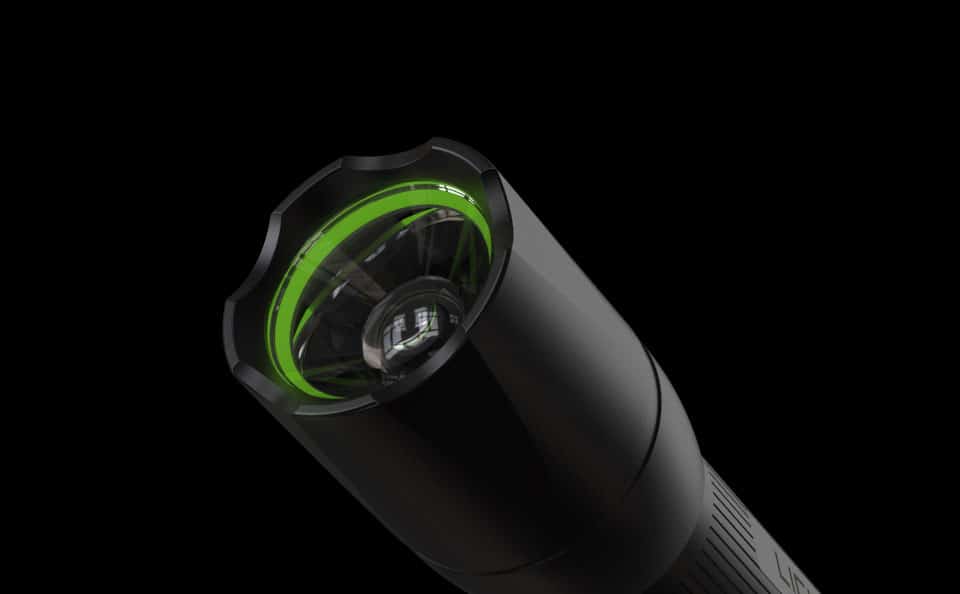With the advancement of technology, the portable light industry has made significant strides in enhancing its lighting sources and power supply. Primarily, the industry has prioritized the advancement of LED chips, batteries, and chargers. For a flashlight manufacturer, staying up-to-date with the latest trends and technology is paramount to ensure that products cater to customer demands. Nonetheless, it can prove challenging for importers to distinguish between a product that reflects the latest trend and one that’s outdated.
Here are some key factors to consider when evaluating a flashlight:
High-powered LED chip
A quality portable light such as a flashlight or headlamp should use a high-powered LED chip that provides bright, long-lasting illumination. Popular LED brands in the flashlight industry include Cree, Osram, and Luminus. While other brands may be good, it’s wise to choose popular, reliable brands if targeting developed countries’ markets.
Rechargeable battery
A rechargeable battery is more convenient and environmentally friendly than disposable batteries. The flashlight should also come with a charger or be able to charge via USB. Nowadays, lights powered by disposable batteries are only for promotional or giveaway uses.
The flashlight industry currently uses a variety of rechargeable batteries, including lithium-ion (Li-ion) batteries and lithium-polymer (LiPo) batteries. Li-ion batteries are commonly used in high-performance flashlights due to their high energy density and long lifespan, while LiPo batteries are typically used in smaller, more compact flashlights due to their small size and high discharge rates. The choice of battery type often depends on the specific needs of the flashlight, such as size, weight, performance, and cost.
USB Type-C charging port
USB-C is a 24-pin USB connector system with a rotationally symmetrical connector. It has several advantages over micro-USB, such as a reversible connector, faster data transfer speeds of up to 10Gbps, the power delivery of up to 100W, versatility, and a smaller form factor. Five years ago, the market was dominated by micro-USB charging ports, but now it’s an outdated style. If a flashlight has a micro-USB charging port, it’s at least three years old.

Fast charging charger
Fast charging is desirable because it allows a device to be charged quickly and efficiently, which is especially important for devices like flashlights that are used in emergency situations. The charging speed of a flashlight is determined by several factors, including the capacity of the battery, the charging rate of the charger, and the condition of the charging port and battery contacts. The quality and condition of the charging cable can also affect the charging speed. However, the most critical factor determining the charging speed is the power of the charger, with 20W, 50W, and even 120W being popular power options.
Impact-resistant
It’s important for flashlights to be able to withstand impact and shock, particularly for outdoor activities where they may be dropped or hit against surfaces. The ANSI (American National Standards Institute) has set a standard for drop resistance, which states that a flashlight should be able to survive a drop from a height of one meter without sustaining significant damage.
Based on our more than 20 years of experience in light manufacturing, the impact is the primary cause of damage to lights. Flashlight manufacturers should strive to meet or exceed this standard to ensure that their products can withstand the rigours of everyday use.
Water-resistant and durable
In our years of providing after-sales maintenance, water has been identified as the second leading cause of damage to lights.
The flashlight should be able to withstand harsh conditions, such as rain or accidental drops, and keep functioning. Waterproofing is essential for a portable light, such as a flashlight, as it allows the device to be used in wet or damp conditions without the risk of damage to the internal components. A waterproof flashlight can be used in outdoor activities such as camping, hiking, or boating without worrying about damage due to rain or water exposure. It also ensures that the device can be used in emergency situations such as floods, storms, or accidents where water is present. Therefore, a waterproof portable light is an essential feature for anyone who needs a reliable and durable source of light in various conditions.
Over-charged and Over-discharged protection function
Batteries and flashlights can be affected by overcharging and over-discharging, which can have negative effects on their performance. Overcharging can damage the battery’s chemical structure, shortening its lifespan and reducing its performance. Over-discharging can also shorten the lifespan of the battery and may prevent the device from working properly.
To avoid these negative effects, batteries and flashlights should have protection circuits to prevent overcharging and over-discharging.
The above are the must-have features of a durable flashlight. Regardless of the type or style of portable light, I believe these are the basic requirements. Of course, a flashlight is not just for illumination, it is a useful tool. Below are some additional features. They are important but not necessary, and they make the flashlight more versatile and functional.
Multiple brightness modes
The flashlight should have multiple brightness modes to suit different needs, from low-power modes for preserving battery life to high-power modes for maximum brightness.
Compact and lightweight
A modern flashlight should be lightweight and easy to carry, especially for outdoor activities or emergencies.
Adjustable focus
The flashlight should have an adjustable focus to change the beam’s width and distance, from a wide flood beam to a narrow spotlight.
Power indicator
A power indicator is helpful to know how much battery life is left and when it needs recharging.
Low battery warning
A low battery warning alerts you when the battery is running low and needs recharging, preventing unexpected battery drain.
Red light mode
Some flashlights come with a red light mode that is useful for preserving night vision or signaling without attracting attention.
Magnetic base
A flashlight with a magnetic base can attach to metal surfaces, making it hands-free and convenient.
Lantern mode
Some flashlights have a lantern mode that diffuses the light in all directions, useful for camping or power outages.
Tactical features
Some flashlights have tactical features such as a strobe mode for self-defense, a strike bezel, or a holster.
Memory function
The flashlight should have a memory function that remembers the last mode used, so you don’t have to cycle through all the modes again.
SOS function
An SOS function is a useful feature in case of emergencies, allowing you to signal for help with flashing light.
Glow-in-the-dark feature
A flashlight with a glow-in-the-dark feature is useful to find it in the dark and prevent loss.

Power bank function
Some flashlights may also feature a built-in power bank capable of charging other devices such as smartphones or tablets. This can be a useful feature for those who frequently need to charge their devices while on the go, or for emergency situations where access to power sources may be limited. Some flashlights even come equipped with multiple charging ports or wireless charging capabilities, further enhancing their versatility and usefulness as a portable power source.
Magnetic charging system
A magnetic charging system flashlight is a type of flashlight that uses a magnetic connection to charge the battery instead of a traditional charging port. The magnetic charger is typically attached to the flashlight and can be plugged into a USB port or wall adapter to recharge the battery. This type of charging system is convenient because it eliminates the need for wires and connectors, making it easier to charge the flashlight on the go. Additionally, magnetic charging systems are often more durable than traditional charging ports, as they are less prone to damage from dust, dirt, and moisture.

In conclusion
After reading the above, you can easily determine whether a product is the latest model. And when you have a limited budget, it is crucial to know how to select the most cost-effective and useful features. Read this post to learn how to get the most out of your money.



33 Responses
473467 437782I saw your post awhile back and saved it to my computer. Only recently have I got a chance to checking it and have to let you know good work. 235233
643465 748478But wanna admit that this really is really helpful , Thanks for taking your time to write this. 947569
434157 399772This style is incredible! You certainly know how to keep a reader amused. Between your wit and your videos, I was almost moved to start my own blog (properly, almostHaHa!) Wonderful job. I actually loved what you had to say, and a lot more than that, how you presented it. Too cool! 336573
อ่านแล้วเข้าใจมากขึ้นเกี่ยวกับ “ดอกไม้งานศพ” ช่วยอธิบายการจัด การจัดดอกไม้ ได้อย่างถูกต้อง น่าสนใจมาก ค่ะ
Feel free to visit my ite … จัดดอกไม้หน้าเมรุ
ขอบคุณสำหรับบทความดีๆ เกี่ยวกับ “ดอกไม้งานศพ” ช่วยอธิบายการจัด พวงหรีด ให้ตรงกับความหมาย ได้ดีเลยทีเดียว
ครับ
Also visit my site :: จัดดอกไม้หน้าศพ
บทความนี้ให้ข้อมูลมีประโยชน์มากครับ ถ้าใครกำลังมองหาผู้ให้บริการตกแต่งงานศพ ผมแนะนำลองดูร้านที่มีผลงานจริงและรีวิวดี ๆ ครับ
Reviw my page – รับจัดดอกไม้งานศพ
บทความนี้ให้ข้อมูลมีประโยชน์มากครับ ถ้าใครกำลังมองหาร้านจัดดอกไม้งานศพ ผมแนะนำลองดูร้านที่มีผลงานจริงและรีวิวดี ๆ ครับ
Also visit mmy homepage … รับจัดดอกไม้หน้าศพ
I don’t even know how I stopped up right here, however I believed this post used to be good.
I do not understand who you are however definitely you are
going to a famous blogger iif you happen to are not already.
Cheers!
My blog – จัดดอกไม้งานศพ
ขอบคุณสำหรับบทความดี ๆ ครับ ถ้าใครกำลังมองหาบริการจัดดอกไม้งานศพ
ผมแนะนำลองดูร้านที่มีผลงานจริงและรีวิวดี ๆ ครับ
my web page: elliottnwcb460-aorestwreath.Wpsuo.com
Greetings! Thhis is my 1st comment here so I just wanted
to give a quick shout out and saay I genuinely enjoy reading
through your blog posts. Can you recommend any other blogs/websites/forums that ggo over the
same topics? Thank you!
My web site :: ออกแบบโลโก้ ฮ วง จุ้ย ที่ไหน ดี
Can’t get enough oof good glass of wine. From a local vineyard
or imported, itt just elevates any occasion. Anyone
else here love wine? #WineTasting
Allso visit my blog: ไวน์ ราคา
I’d likme to find out more? I’d love to find out
some additional information.
Feel free to surf to my web-site: Jorge
I rdally enjoy good vintage wine. From a locaal vineyard or imported, it’s the
perfect way to relax. Whoo else enjogs wine tasting?
#WhiteWine
Also visit my blog post ไวน์ราคาถูก
583265 148191Hello! Nice post! Please do keep us posted when we can see a follow up! 637333
I really enjoy good vintage wine. From a local vineyard or imported, it’s the perfect way to relax.
Are there any wine lovers around? #WhiteWine
Feel free tto surf too mmy homepage :: แชมเปญ
I’m a huge fan of good goass of wine. From a local vineywrd or imported,
it’s the perferct way to relax. Who elsxe enjoys wine tasting?
#WhiteWine
Also visit my webpage: ขายไวน์ออนไลน์
I’ma huige fan of good wine. Whether it’s red oor white,
it just elevates any occasion. Are there any wine
lovers around? #WineTasting
Feel free tto surf to my homepage: ขายไวน์
Can’t get enough of good glass of wine. Whether it’s red or white, wine always makes
the moment better. Are there any wine lovers around? #WineTasting
Also visit my homepage – ร้าน ขาย ไวน์
Can’t get enough of good wine. Doesn’t matter if it’s dry or sweet,
wine always maks the moment better. Who else enjoys wine tasting?
#WhiteWine
Take a look at my web-site ขายไวน์ยกลัง
ขอบคุณสำหรับบทความดี ๆ ครับ
ถ้าใครกำลังมองหาบริการจัดดอกไม้งานศพ ผมแนะนำลองดูร้านที่มีผลงานจริงและรีวิวดี ๆ ครับ
Also visit my web page – จัดดอกไม้งานขาว ดํา
บทความนี้ให้ข้อมูลมีประโยชน์มากครับ ถ้าใครกำลังมองหาผู้ให้บริการตกแต่งงานศพ ผมแนะนำลองดูร้านที่มีผลงานจริงและรีวิวดี ๆ ครับ
Feel free to visit my web page จัดดอกไม้งานขาว ดํา แบบ ง่ายๆ
Can’t get enough of good glass of wine. Whether it’s red or white, it’s the perfect way to relax.
Are there any wine lovers around?
My webpage :: Indira
เป็นข้อมูลที่มีประโยชน์มากเรื่อง “ดอกไม้งานศพ” บอกถึงวิธีเลือก
การจัดดอกไม้ ได้อย่างถูกต้อง ได้ดีเลยทีเดียว ค่ะ
Here is my web site – จัดดอกไม้หน้าเมรุ
ขอบคุณสำหรับบทความดี ๆ ครับ ถ้าใครกำลังมองหาผู้ให้บริการตกแต่งงานศพ ผมแนะนำลองดูร้านที่มีผลงานจริงและรีวิวดี ๆ ครับ
Also visit my web-site – พวงหรีดดอกไม้สด ราคา
บทความนี้ให้ข้อมูลมีประโยชน์มากครับ ถ้าใครกำลังมองหาร้านจัดดอกไม้งานศพ ผมแนะนำลองดูร้านที่มีผลงานจริงและรีวิวดี ๆ ครับ
Also visit my site: ราคาพวงหรีดดอกไม้สด
ขอบคุณสำหรับบทความดี ๆ ครับ ถ้าใครกำลังมองหาร้านจัดดอกไม้งานศพ ผมแนะนำลองดูร้านที่มีผลงานจริงและรีวิวดี ๆ
ครับ
Here is my homepage – http://Www.liberte-de-conscience-rideuromed.org/forum-déchanges/profile/staciejulius379
บทความนี้ให้ข้อมูลมีประโยชน์มากครับ ถ้าใครกำลังมองหาบริการจัดดอกไม้งานศพ ผมแนะนำลองดูร้านที่มีผลงานจริงและรีวิวดี ๆ
ครับ
Here is my web blog: สั่งพวงหรีดผ้าขาวม้า
บทความนี้ให้ข้อมูลมีประโยชน์มากครับ ถ้าใครกำลังมองหาผู้ให้บริการตกแต่งงานศพ ผมแนะนำลองดูร้านที่มีผลงานจริงและรีวิวดี ๆ ครับ
Feel free to surf to my blog: ราคาพวงหรีดดอกไม้สด
ชอบแนวคิดที่แชร์ไว้ในบทความนี้ครับ ถ้าใครกำลังมองหาร้านจัดดอกไม้งานศพ ผมแนะนำลองดูร้านที่มีผลงานจริงและรีวิวดี ๆ
ครับ
My homepage; Aorest
840154 553523For anybody who is considering about external complications, sometimes be tough amaze those to realize to produce just a single weed in this quite flowing typically requires eleven liters concerning gasoline to. dc free mommy weblog giveaways family trip home gardening house power wash baby laundry detergent 824968
อ่านแล้วเข้าใจเรื่องการเลือกดอกไม้แสดงความอาลัยได้ดีขึ้น
กำลังค้นหาข้อมูลเรื่องนี้อยู่พอดี ถือว่าเจอบทความดีๆ เลย
จะบอกต่อให้เพื่อนๆ ที่ต้องการเลือกดอกไม้ไปงานศพอ่านด้วย
Here is my webpoage รับจัดดอกไม้งานศพ
บทความนี้ให้ข้อมูลมีประโยชน์มากครับ ถ้าใครกำลังมองหาบริการจัดดอกไม้งานศพ ผมแนะนำลองดูร้านที่มีผลงานจริงและรีวิวดี ๆ ครับ
My website; รับจัดดอกไม้หน้าศพ
Just spent a bit on h786game.info. Its nothing bad. Try h786game.